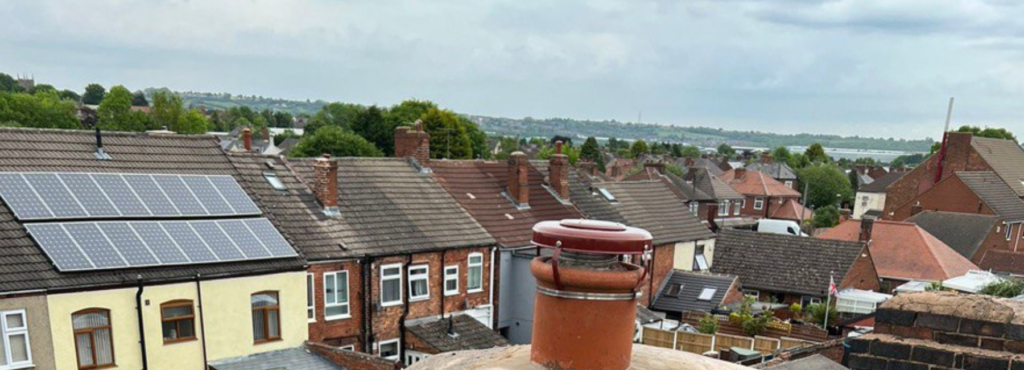Choosing the right roof tiles for your home is about more than just appearance — it’s about durability, weather resistance, and long-term performance. However, no matter how high-quality your roof tiles are, they can still be at risk of slipping over time. At Portchester Roofing Repairs, we help homeowners in Portchester, Hampshire, understand how tile type, installation methods, and maintenance all influence how secure their roofing system remains over the years.
The Main Types of Roof Tiles
Roof tiles come in a variety of materials, each with its own strengths, lifespan, and vulnerabilities. Understanding these differences can help you make informed decisions about maintenance and potential slippage prevention.
1. Clay Roof Tiles
Clay tiles are among the oldest and most traditional roofing materials in the UK. They’re prized for their elegant appearance and resistance to fading, making them a popular choice for heritage homes. However, because they’re relatively heavy and brittle, they rely on strong fixings and correct alignment. If exposed to repeated wet-dry cycles, clay tiles can become loose or cracked, increasing the chance of slippage.
2. Concrete Roof Tiles
Concrete tiles are widely used due to their strength and affordability. They can mimic the look of slate or clay but are heavier, which puts extra strain on the roof structure over time. Their weight means that if nails or clips corrode, tiles can slip out of place — especially in regions like Hampshire where roofs face strong winds and heavy rain.
3. Slate Roof Tiles
Slate tiles are known for their durability and natural beauty. When properly installed, they can last for many decades. However, their longevity depends heavily on the fixings used. If the nails begin to corrode — a common issue in older roofs — slate tiles can gradually work loose and slide. Regular maintenance checks by Portchester Roofing Repairs can prevent this from becoming a serious issue.
4. Metal Roof Tiles
Metal roofing tiles, often made of steel or aluminium, are lightweight and long-lasting. They are less prone to slipping because they interlock securely, but poor installation or corrosion around the fixings can still create weak points.
5. Composite and Synthetic Tiles
Modern roofing systems sometimes use synthetic or composite tiles made from recycled materials. While lightweight and durable, they can expand or contract with temperature changes, which may loosen fixings if not installed correctly.
Common Causes of Roof Tile Slippage
Even the best materials can slip if certain conditions develop over time. Some of the most frequent causes include:
- Aging fixings: Corroded nails or clips can no longer hold tiles securely in place.
- Poor installation: Incorrect alignment or spacing can allow tiles to shift.
- Roof movement: Natural expansion, contraction, or settling of the roof structure.
- Weather exposure: High winds, frost, and prolonged rainfall can weaken fixings.
- Moss or debris build-up: Moisture trapped under moss can lift tiles slightly, making them more prone to slipping.
Identifying and addressing these issues early is essential for keeping your roof watertight and preventing further damage.
Why Slipped Tiles Should Never Be Ignored
A single slipped tile may seem minor, but it can expose the underlay to rain and wind. This not only risks leaks but can also allow water to penetrate the roof structure, leading to timber rot and damp insulation. Over time, one loose tile can trigger a domino effect, where surrounding tiles become unstable too.
If you notice uneven roof lines, missing tiles, or fragments on the ground after a storm, it’s crucial to have your roof inspected promptly by professionals such as Portchester Roofing Repairs.
Preventing Roof Tile Slippage
Regular roof maintenance is the best way to avoid tile slippage. Some practical steps include:
- Scheduling routine inspections: Professional checks identify early signs of movement or corrosion.
- Replacing corroded nails or clips: Modern stainless steel or copper fixings resist rusting.
- Cleaning moss and debris: Prevents moisture retention that loosens tiles.
- Ensuring proper ventilation: Reduces condensation under tiles that can weaken the underlay.
- Prompt repairs: Addressing a single slipped tile immediately prevents more widespread issues.
Professional roofers can also secure vulnerable tiles with new fixings or adhesive systems where appropriate, maintaining both the strength and appearance of the roof.
The Role of Professional Expertise
Tile slippage often appears as a minor problem but correcting it requires precision and safety awareness. Roof repair specialists like Portchester Roofing Repairs have the experience to identify not just the visible symptoms, but the underlying cause — whether that’s worn fixings, underlay damage, or roof movement. By addressing the source of the problem, we ensure that your roof remains stable and watertight for years to come.
Conclusion
Every type of roof tile, from traditional clay to modern composite, has its own advantages and potential slippage risks. While small signs of movement might seem harmless, they can quickly escalate into serious water ingress issues if ignored. The key to long-lasting roof performance lies in regular inspections, quality repairs, and professional installation. Portchester Roofing Repairs in Portchester, Hampshire, offers expert maintenance and repair services designed to protect your roof against the elements and ensure your tiles stay securely in place season after season.
Call us on: 023 8235 6170
Click here to find out more about Portchester Roofing Repairs
Click here to complete our contact form and see how we can help with your roofing needs.

